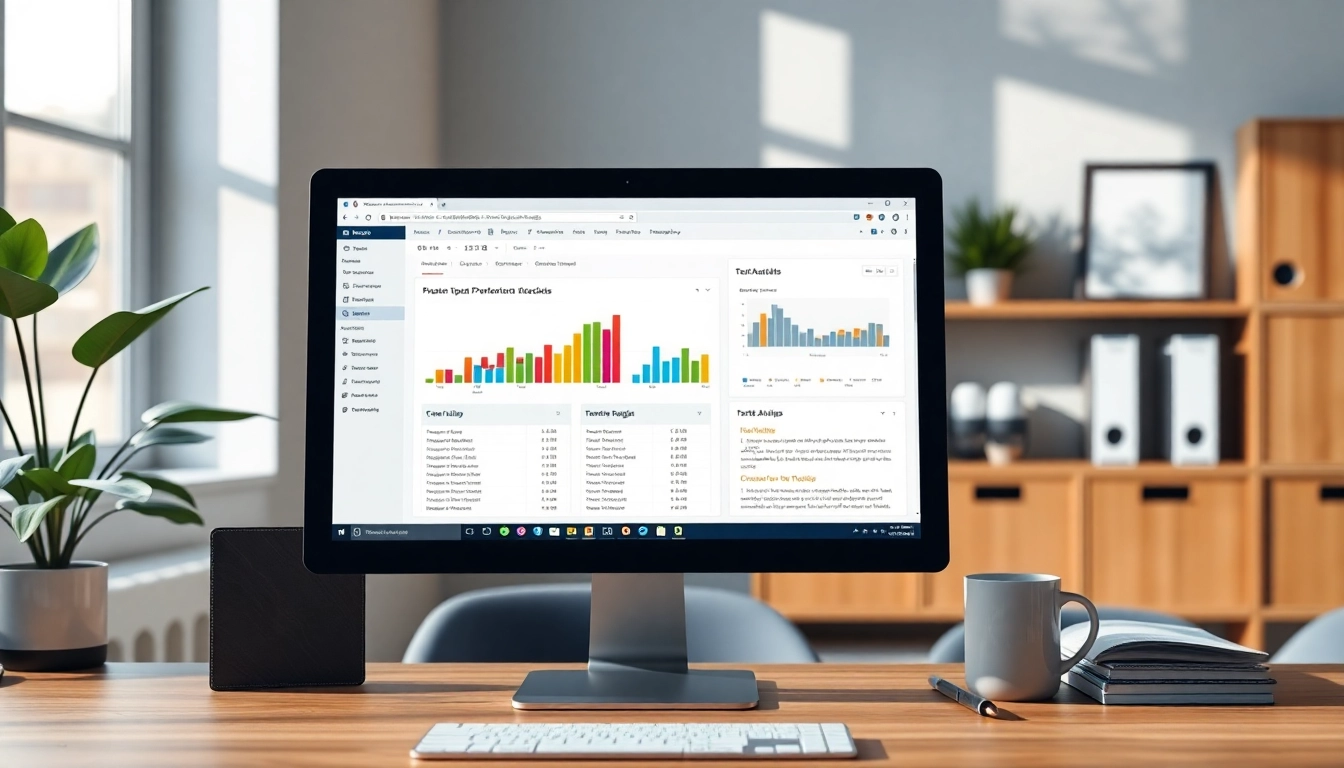Understanding Plagiarism and Its Implications
What is Plagiarism?
Plagiarism is the act of using someone else’s work, ideas, or expressions without properly acknowledging the original source. It can occur in various forms, from direct copying of text to more insidious forms such as paraphrasing someone’s ideas without citation. In academic settings, plagiarism is a serious offense, not only because it misrepresents a student’s own knowledge and effort but also because it violates intellectual property rights.
There are different forms of plagiarism, including:
- Direct Plagiarism: Copying text word-for-word without attribution.
- Self-Plagiarism: Reusing one’s own previously published work as new without crediting it.
- Paraphrasing Plagiarism: Rephrasing someone else’s ideas without citation.
- Accidental Plagiarism: Inadvertently failing to cite sources or misquoting them.
The Consequences of Plagiarism
The consequences of plagiarism can be severe and far-reaching. In academic contexts, it might lead to disciplinary actions such as suspension or expulsion. Failing grades on assignments or courses are common repercussions, as is the loss of credibility among peers and professors. Beyond academia, plagiarism can also result in legal action, particularly when it involves the theft of intellectual property in professional settings.
In addition to formal repercussions, there are personal consequences; plagiarists may experience guilt, a loss of confidence, and damage to their reputation, which can affect future educational and career opportunities.
Types of Plagiarism Identified by Checkers
When using a plagiarism checker, one can identify various types of plagiarism. These tools can analyze content for:
- Copying sources from books, articles, and websites.
- Uncited paraphrasing of ideas or passages.
- Similarities between documents submitted for different assignments.
Understanding these distinctions not only helps writers avoid plagiarism but also equips them with the skills necessary to produce original content.
The Importance of Using a Plagiarism Checker
Why Every Writer Needs a Plagiarism Check
In the digital age, the pressure to produce original content is greater than ever. Writers at all levels, whether students or professionals, can easily find themselves unintentionally committing plagiarism. A plagiarism checker serves as an essential tool in any writer’s arsenal, ensuring that work is original and that sources are appropriately cited. By integrating a plagiarism checker into the writing process, authors can maintain integrity while honing their writing skills.
How Plagiarism Checkers Improve Academic Credibility
Academic credibility is crucial for success in scholarly environments. Using a plagiarism checker helps writers ensure that their work aligns with academic standards, thereby increasing the credibility of their submissions. This practice not only protects the integrity of one’s work but also enhances the overall quality of academic discourse.
Additionally, a plagiarism-free submission reflects a writer’s dedication to research and ethical scholarship, further bolstering their academic reputation.
Real-World Applications of Plagiarism Checkers
Plagiarism checkers offer benefits that extend beyond academia. In professional contexts, organizations and businesses utilize these tools to verify the originality of content submitted for publications, reports, or marketing. Using plagiarism detection technologies fosters a culture of integrity and accountability, which is crucial in sectors where copyrights and intellectual property rights are paramount. Furthermore, educators use plagiarism checkers to uphold academic standards and guide students in improving their writing habits through constructive feedback.
Popular Plagiarism Checker Tools Reviewed
Features to Look for in a Plagiarism Checker
When selecting a plagiarism checker, it is vital to consider various features that enhance functionality:
- Database Access: A comprehensive database that includes academic journals, websites, and publications ensures thorough checks.
- Real-Time Checking: Efficient tools provide instant feedback, showcasing identified matches immediately after scanning.
- Multiple File Formats: The ability to check various formats (.doc, .pdf, .txt) offers flexibility for users.
- User-Friendly Interface: A simple interface promotes accessibility for users of all tech-savviness levels.
Comparison of Leading Plagiarism Checkers
Among the myriad of available tools, seven stand out for their unique features:
- Grammarly: Not just a grammar checker, Grammarly offers a robust plagiarism checker that scans content against billions of web pages.
- PapersOwl: This tool uses advanced AI technology to ensure 100% accurate plagiarism detection, ideal for students and professionals alike.
- Plagiarism Detector: Known for its free service, this checker compares documents against numerous online sources for potential matches.
- Scribbr’s Plagiarism Checker: Utilizes similar software as that of universities to ensure accuracy while checking for AI-generated content.
- Duplichecker: A straightforward, free tool perfect for quick checks and scans.
- Copyscape: Often preferred for website content, Copyscape provides a reliable means to check for duplicates published online.
- Turnitin: Widely used in academic institutions, Turnitin offers detailed reports highlighting the percentage of matching text.
User Ratings and Experiences with Various Tools
User feedback often guides the choice of plagiarism checkers. For instance, Grammarly boasts a 4.7-star rating with thousands of satisfied users praising its accuracy and user-friendly design. PapersOwl maintains an impressive score at 4.9 based on usability for students, while Scribbr is favored by academics for its detailed reports. Consistently high ratings across these platforms demonstrate a commitment to excellence and user satisfaction.
How to Use a Plagiarism Checker Effectively
Step-by-Step Guide to Running a Check
Using a plagiarism checker is straightforward if you follow these steps:
- Select the Tool: Choose a plagiarism checker that fits your needs based on feature comparisons.
- Prepare the Document: Ensure your document is in a compatible format for your chosen tool.
- Insert Text: Either copy and paste the text or upload the document directly.
- Run the Check: Click the check button and wait for the software to analyze the content.
- Review Results: Analyze the findings carefully, paying attention to highlighted sections that need citation.
- Revise if Necessary: Revise the content to address any issues identified by the checker.
Interpreting the Results of a Plagiarism Check
Post-check, it’s crucial to understand the results presented. Most plagiarism checkers will provide:
- Exact Match Links: Where the text was originally published.
- Similarity Percentages: Highlighting how much of your work matches with other published materials.
- Suggestions for Revisions: Recommendations to paraphrase or cite sources where duplicate content is found.
Enhancing Content through Post-Check Adjustments
Upon receiving the results, it’s beneficial to enhance the content based on the findings. This can include rephrasing sections to improve clarity or integrating additional insights to support arguments. Moreover, consistent utilization of a plagiarism checker can foster better writing habits and enhance originality over time.
The Future of Plagiarism Detection Technologies
Advancements in AI and Plagiarism Detection
Future advancements in AI hold great promise for plagiarism detection technologies. Machine learning algorithms can be trained to not only detect obvious plagiarism but also recognize more complex forms, such as paraphrased content that may not be directly identified by current tools. These innovations could lead to real-time feedback for writers, providing insights on how to improve and properly credit sources during the writing process.
Ethical Considerations in Automated Checking
As AI technology evolves, ethical considerations in automated plagiarism detection become paramount. Issues surrounding data privacy, copyright infringement, and the reliability of automated judgments pose questions that stakeholders will need to address. Transparency in how these tools function and regard for literary ownership must remain at the forefront of discussions in plagiarism detection technology.
Predictions for the Next Generation of Plagiarism Checkers
With ongoing advancements, the next generation of plagiarism checkers is likely to incorporate sophisticated AI capabilities, gaining improved accuracy in identifying various plagiarism types. Personalized learning features may also be integrated, offering users tailored advice based on their writing styles and histories. Furthermore, we can expect a shift toward greater integration with writing platforms and educational resources, allowing seamless verification of work as it is being created. This holistic approach would not only help maintain originality but also enhance overall writing quality across disciplines.




